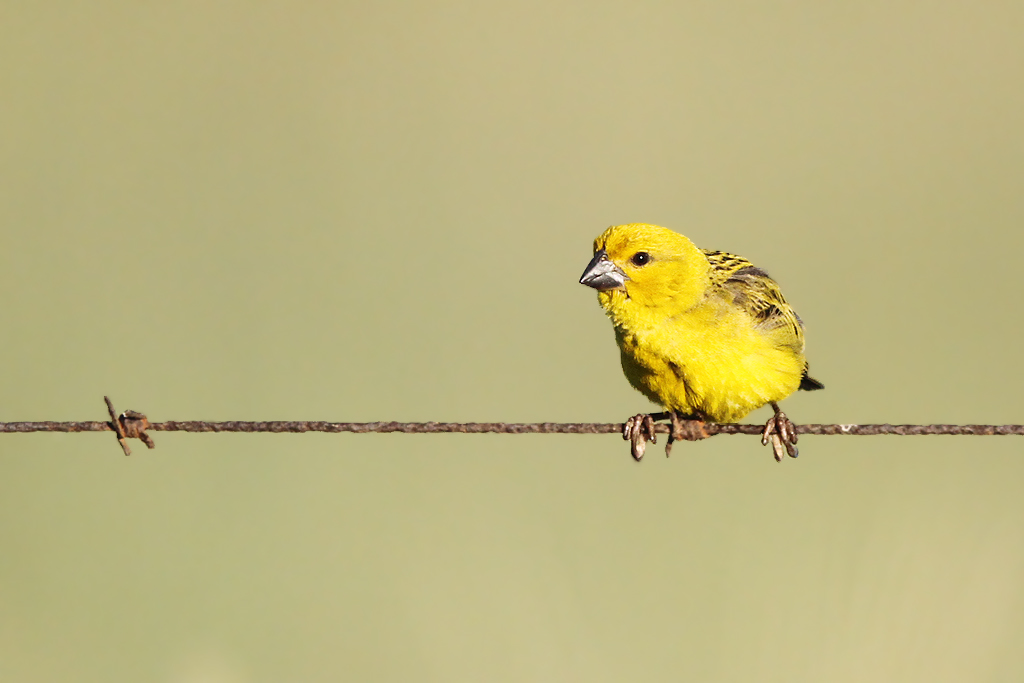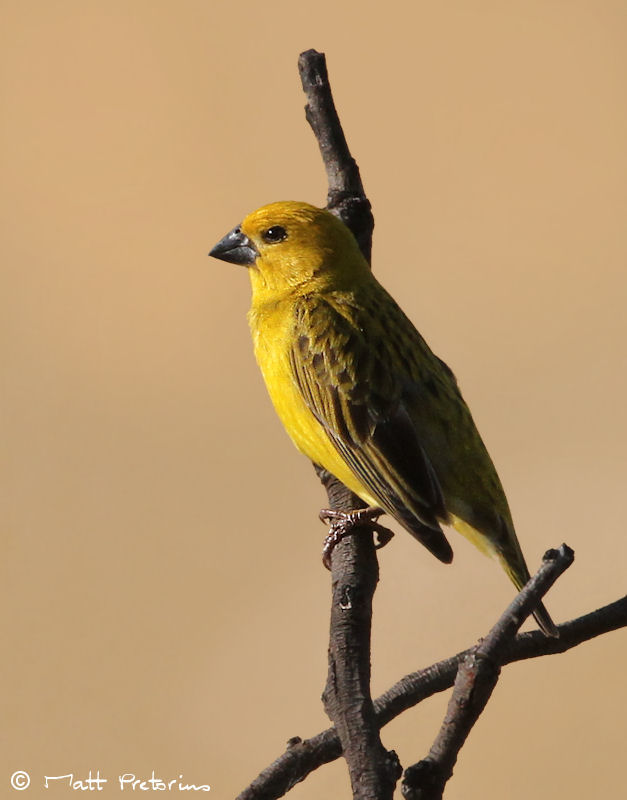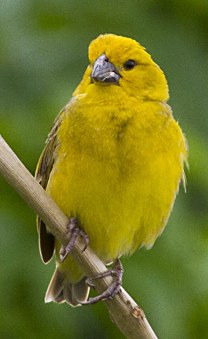
Anomalospiza imberbis
SUBFAMILY
Viduinae
TAXONOMY
Crithagra imberbis Cabanis, 1868, East Africa = Zanzibar.
OTHER COMMON NAMES
English: Parasitic weaver; French: Anomalospize parasite; German:
Kuckucksfink; Spanish: Tejedor Parбsito.
Resident
Vidua funerea
PHYSICAL CHARACTERISTICS
5.1 in (13 cm); unsexed birds 0.8–0.9 oz (23–26 g). Breeding
male, yellow with some streaking, bill black. Non-breeding
male, yellowish head, upperparts olive with heavy streaks, bill
brown. Female mainly buffy, heavily streaked on upperparts.
Short-tailed, with a stubby bill, deep at base. Juvenile resembles
female.
DISTRIBUTION
Local in western and central Africa, through eastern Africa to
southern Africa.
HABITAT
Open grassland with scattered trees, wetlands, cultivated lands.
BEHAVIOR
Little-known and probably nomadic; likely to be overlooked in
mixed flocks of seedeaters. When breeding, in pairs or small
groups. Male has rasping song in display, defends grassland
territory. Non-breeding birds form large roosts in reedbeds,
sometimes holding more than 500 birds.
FEEDING ECOLOGY AND DIET
Seeds, mostly collected while perching on grasses and weeds.
REPRODUCTIVE BIOLOGY
Brood parasite, mating system not known, but probably polygynous.
Lays one to two eggs per nest, removing one or more
host eggs. Incubation 14 days, fledging 18 days. Hosts are warblers
of the genera Cisticola or Prinia, host young usually trampled
in nest, rarely reared with parasite young. Two cuckoo
finch young may be reared together.
CONSERVATION STATUS
Wide range and not considered threatened.
SIGNIFICANCE TO HUMANS
None known.
Photo Gallery of - Cuckoo finch




 Animalia Life
Animalia Life